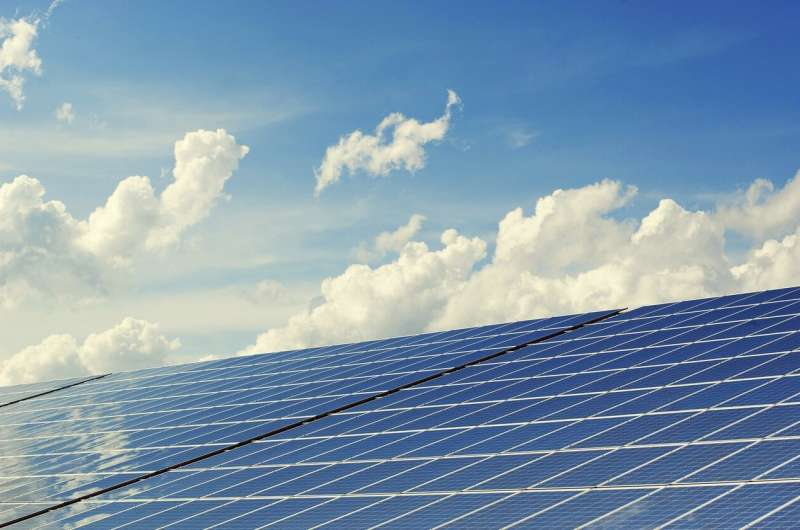Solving solar panels’ dirty problem

From water-repellent to water-loving with ultraviolet (UV) light, surfaces are being developed that protect panels and glass facades from expensive and time-consuming cleanings.
Solar panels get dirty. Dust, sand and other matter accumulate on their surface, preventing the sun’s light energy from reaching the solar cells and causing enormous losses in a photovoltaic system’s efficiency. But what can be done when cleaning solar panels is not only very costly but also laborious?
Researchers working on the NewSkin project have found a way to deal with this problem by developing hydrophobic, or water-repelling, surfaces that become superhydrophilic when exposed to UV light.
Unlike hydrophobic surfaces, on which the water is repelled and contracts to form droplets, superhydrophilic surfaces have a very strong affinity for water, which spreads across them, maximizing contact with the material. This can help make the removal of dirt from panels and glass facades less expensive by reducing maintenance costs and more time-efficient, while also enhancing solar energy production.
“We are focusing on photoinduced hydrophilicity on surfaces here,” explains graduate student Valentin Heiser from NewSkin project partner Fraunhofer Institute for Organic Electronics, Electron Beam and Plasma Technology FEP (Fraunhofer FEP), Germany, in a press release posted on the institute’s website.
“To upscale this effect, we apply crystalline titanium oxide to ultrathin glass in a roll-to-roll process for the first time. This is very efficient. The ultrathin and lightweight glass can be applied subsequently to facades or directly incorporated into solar modules as a composite material—and even onto curved surfaces.”
A change in 30 minutes
Without any UV radiation, titanium dioxide (TiO2) is hydrophobic, forming water droplets. However, after irradiating a TiO2-coated surface with UV light for about 30 minutes, the Fraunhofer FEP researchers found that the surface changed from hydrophobic to superhydrophilic.
This means that zero or very little dirt can be deposited on surfaces with a TiO2 coating. The press release explains further: “If, for example, traffic dust, sand or other dirt deposits on glass facades or solar panels, it is washed off by the nightly hydrophobicity of the surface via beading raindrops. In addition, the cyclic alternation of hydrophobic and superhydrophilic properties means that the dirt does not adhere to the surface during the day.”
The researchers have now developed the first coatings. They have coated a 30-cm-wide and 20-m-long roll of thin (100-micrometer-thick) glass with 30 to 150 nanometers of titanium oxide in a roll-to-roll system at a Fraunhofer FEP pilot plant. However, there are still challenges to overcome. Thin glass is a new substrate that breaks very easily and is extremely sensitive to thermal and mechanical stresses.
Additionally, TiO2 achieves hydrophobicity and hydrophilicity only when it is crystalline, for which high temperatures are needed during its production. The press release adds: “Sputter coatings with these requirements could not be implemented in roll-to-roll technology until now because common substrates, such as films, could not withstand the high temperatures. This is where thin glass provides an alternative.”
The research conducted as part of NewSkin (Innovation Eco-system to Accelerate the Industrial Uptake of Advanced Surface Nano-Technologies) has enabled the Fraunhofer FEP scientists to work on combining TiO2 and thin glass properties optimally and cost-efficiently to bring innovative products to market. Researchers from Swedish project partner Uppsala University are also working on transferring the results to polymer films.
More information:
NewSkin project website
Citation:
Solving solar panels’ dirty problem (2023, February 14)
retrieved 14 February 2023
from https://techxplore.com/news/2023-02-solar-panels-dirty-problem.html
This document is subject to copyright. Apart from any fair dealing for the purpose of private study or research, no
part may be reproduced without the written permission. The content is provided for information purposes only.
For all the latest Technology News Click Here
For the latest news and updates, follow us on Google News.
